|
There is a significant difference between the falling into the state of ‘dull’ nothingness (as warned against by Master Xu Yun) and the realisation of genuine ‘emptiness’ within traditional Chinese Ch’an training. The difference must be properly understood if progression is to be made. a) ‘Nothingness’ (Pali 'Akincanna’) - or ‘No-Something-Ness' - is the falling into ‘dull’ nothingness often mistaken as the realisation of genuine ‘emptiness’ and ‘enlightenment’ - which is still ‘post-thought’ in manifestation. b) The realisation of genuine ‘Emptiness’ (Pali ‘Sunnata’) or relative enlightenment is ‘pre-thought’ - as the empty mind ground is what is perceived when no thoughts arise. What does this mean? Dull nothingness (akincanna) is a thought form with a non-descript content. In other words, a thought is generated which is defined by the usual boundaries and parameters that constitute the average structured ‘thought’ form - but the meditator misunderstands this ‘non-descript’ content and mistakenly grasps it as being the empty mind ground. The trap here is that a manifest ‘thought’ (and stream of thought) is masquerading as the psychic fabric from which all structured thought arises – and which pre-exists all thought. This state is mistaken as complete and perfect enlightenment and those trapped within it start misleading others down the wrong path. By way of contrast, the state of genuine ‘emptiness’ (sunnata) is realised when all thought generation ‘ceases’ at its source – and the empty mind ground manifests and becomes apparent as its presence is no longer obscured by the continuous stream of thought which normally traverses the surface mind. No thoughts arise whatsoever and so the empty mind ground becomes perceivable. As there is a sense of ‘constriction’ - this genuine state of ‘emptiness’ realisation is termed ‘Sitting atop a hundred-foot pole’ (which is symbolic of Hinayana enlightenment), as it is accompanied by a sense of ‘peace’ and ‘tranquillity’ - but a further stage of training is required.
0 Comments
Dear T
Thank you for your interesting email and much appreciated kind words. If you can see the essence of each letter - then we have no business together. Master Xu Yun (1840-1959) exuded this understanding every moment - just in case. The 'hua tou' (word head) is the method whereby the 'essence' (or 'beginning') of each word-letter is clearly perceived as forming, emerging and presenting from within the empty mind ground. As the enquiry requires a certain investigative power - usually this is provided by the question 'Who?' - deployed in any manner that suits the individual. Master Xu Yun used the hua tou 'Who is dragging this corpse around?' Another effective hua tou is 'Who is hearing?' - the latter arising from the instruction contained within the Surangama Sutra (translated by my grand-teacher - Charles Luk). Hearing in this context is not only everything that is heard with the ears - but all sensual stimulation - as all sensory stimulation arises (and returns) to the empty mind ground. Silent Illumination is nothing more than the empty mind ground - when it is fully realised, stabilised and the mind is fully extended. The hua tou 'stills' the mind (so that 'emptiness' within the head-mind is realised) - then, with further training - this realisation of 'emptiness' expands to penetrate the entire body and the environment. This is the extension of this realised 'emptness' throughout the interaction of the six-senses and the six-sense objects (that comprise the physical environment). The three stages of Ch'an training within the Caodong School are: 1) Surface-mind movement - delusion and confusion (guest). 2) Realised 'stillness' and 'emptiness' of mind (host). 3) Expanded awareness - whereby 'stillness' and 'emptiness' expand to incorporate the 'form' (material world) and 'void' (underlying empty mind ground). (Host-in-Host). These three basic levels of attainment can be further subdivided into five, eight, ten or even more stages - depending upon tradition. Another way of interpreting these three stages is: a) Delusion (the normal everyday mind). b) Relative enlightenment ('still' mind) a sense of 'peace' limited to the individual mind - Hinayana. c) Complete enlightenment (fully 'expanded' and permanently purified mind and senses) - Mahayana. None of this should be of too much concern for you. If the words and letters are not returned to the empty mind ground - then we can exchange words all day long - and nothing much will happen. Recently, I was given a 'dust whisk' - imagine that! Utter madness - and yet I did not refuse it - even more unbelievable! All Best Wishes Adrian Remembering Richard Hunn (1949-2006) - Sixteenth Commemoration of His Passing! (1.10.2022)10/5/2022 At certain times it seems more appropriate to remember particular events - whilst at others it is more in keeping (and more opportune) to just let certain dates and times to quietly go by without making any comment. Ch'an certainly has no interest in the conventions of the world - and Ch'an Masters even less! Bodies come into existence and then pass-away - utilising various time-frames inbetween. Society 'measures' these time-spans for scientific reasons - but all the Ch'an Method is concerned about is that each individual 'realises' the empty mind ground! Remembering the physical existence - and the 'joy' Richard Hunn's presence in the world symbolised - the Ch'an Method insists that we 'remember' to 'look' within so that we can directly perceive the 'empty mind ground' with clarity and without interruption! Richard Hunn lived for fifty-seven years and every one of those years emerged from (and eventually returned to) the empty mind ground. This image above, for instance, is a bridge situated in the remote and surrounding (mountainous) areas outside of the City of Kyoto - the place he lived within from 1991-2006. Richard Hunn was engaged in studying the origins of Chinese Ch'an in Japan - and whilst doing this he visited many and numerous Zen Temples and was introduced to 'old' ethnic Japanese martial arts teachers who lived in seclusion whilst practicing 'Chinese' martial arts systems 'outside' of the official grading system of 'coloured belts' authorised by the Japanese Government (usually possessing only a single disciple whose family possessed the financial means to support this sibling and his or her Master). Such Japanese teachers have to live in a remote and simplistic poverty as a form of 'punishment' - as such individuals are not entitled to the generous financial, material and political support afforded to the so-called 'Japanese' martial arts systems 'preferred' by the Japanese Establishment! The point is that Richard Hunn studied a broad segment of Japanese culture - making his living teaching the English language and English literature at Kyoto University. He travelled widely throughout Japan - lived in an old Samurai Cottage - and made effective attempts to see 'through' the preferences and bias of modern Japanese culture - seeing the Chinese roots of much of Japanese culture that is now denied, ridiculed or even actively negated in Japan! In the material realms of study, science and academia all this data collecting is of vital research importance - but none of it transcends the need for the Ch'an Method and the need to effectively 'look' within! This is why I remember the two sides of Richard Hunn - the academic who traversed the material environment making important notes and observations - and the Ch'an Master who effectively 'looked' within, whilst helping others to do the same!
I apprenticed with Richard Hunn (1949-2006) for sixteen years - and it was from his expert guidance that I learned to read traditional and simplified Chinese script! As for the ethnic Chinese side of my family - I learned an old form of the Hakka language mixed with Hong Kong Cantonese - but I did not learn Chinese ideograms (other than a handful marking key Chinese philosophical terms). I mostly learned the 'pinyin' of Mainland China as this overlapped with my Western (British) education! Richard Hunn was not only a leading British Sinologist who had been accepted within the ethnic Chinese community - he had also studied with (and inherited) a legitimate Ch'an lineage under an ethnic Chinese teacher - Charles Luk (1898-1978)! In 1991, Richard Hunn took the decision to permanently relocate to Kyoto, Japan, to embark upon a commisioned study programme designed to research the Chinese Ch'an Buddhist roots of Zen Buddhism in Japan! Kyoto is an ancient city that was spared Allied blanket-bombing during WWII and still possessed ancient 'Chinese' Ch'an temples tucked between typical Japanese Zen Buddhist temples, whilst in the remote hills surrounding Kyoto, there still existed Japanese martial arts Masters who lived in rustic huts (usually with a single disciple), who practiced, preserved and passed on Chinese martial traditions that did not receive the usual Japanese government financial, cultural or political support due to their refusal to adopt the coloured-belt system of Judo - and make an official proclamation denouncing their 'Chinese' heritage. These old Masters usually survived through the kindness of rich patrons. Richard Hunn, however, was permitted a number of interviews with some of these Masters who described the history of the martial and medicinal lineages they upheld! All this stems from the fact the Japanese convention is to 'separate' lineages - whilst the Chinese tendency is to 'integrate'! In Japan, 'Soto' and 'Rinzai' are presented as unrelated Buddhist traditions - whilst in China - 'Caodong' (Soto) Masters readily resorted to all kinds of methods to free the minds of their students (including the hua tou and gongan), whilst a number of Linji (Rinzai) Masters allowed their disciples to 'sit quietly' and contemplate the empty essence of their minds! Part of this issue can be traced to the dynamics of the transmission process. Zen Master Dogen [道元 - Dao Yuan] (1200-1253), for instance, was an 'enlightened' Rinzai Master before he set-off to Japan during 1223! (His name literally translates as 'Way Origin' - or 'Emergence of Perfect Order' - and is probably related to the Confucian concept of 'Li' [禮]. That which is good but 'invisible' - through correct thought and virtuous action - is made 'visible'). When he arrived, he found his understanding was deficient (even amongst the Linji Sects), and was completely exposed when communicating with the Caodong Masters! What is presented below are a few pages of the book entitled 'Dogen's Formative Years in China - An Historical Study and Annotated Translation of the Hokyo-Ki' By Takashi James Kodera, Routledge, 1980, Pages 26-35. None of the above or following scholarship is included in this book. However, as it is my function is to facilitate the further transmission of authentic Chinese Ch'an into the West - this extra data is provided to empower the general reader to a greater degree, so that they may possess a deeper appreciation of the subject matter at hand from a Chinese language perspective, given that Takashi James Kodera has done such a good job at presenting the Japanese cultural perspective. The term pronounced 'Hokyo-Ki' in the Japanese language is written using the following Chinese ideograms:
a) 宝 (Bao) = Ho - Precious, Treasure and Cherish b) 庆 (Qing) = Kyo Virtue, Auspicious and Congratulate c) 记' (Ji) = Ki Record, Chronical and Notes Therefore, Hokyo-Ji = Baoqing-Ji (宝庆记)! Dogen studied in China between 1223-1227 CE - which was the time of the Southern Song Dynasty (1127-1279 CE). Emperor 'Lizong' (理宗) reigned between 1224-1264 CE. Dogen named this book after the first 'Era' of Lizong's reign which was termed 'Baoqing' (宝庆) - named after a house the emperor particularly favoured (a house of 'Cherished Virtue'). The ''Baoqing' (宝庆) Era measured three years of chronological time: 1) 1225 - Stem and Branch 'Yiyou' (乙酉) 2) 1226 - Stem and Branch 'Bingxu' (丙戌 3) 1227 - Stem and Branch 'Dinghai' (丁亥) Dogen's text then, purports to record in writing the details of the experiences he encountered whilst traversing the Zhejiang area of East China, and the information he gathered for the years '1225'. '1226' and ''1227'. This is a significant observation as this book omits the first years of '1223' and '1224' of Dogen's visit to China and instead focuses upon his interaction with the Caodong Ch'an teacher - Master 'Tiantong Rujing' (1163-1228). Therefore, the Baoqing Record (宝庆记) is a manual of all the dialogues and interactions that occurred between Dogen and Master Rujing! It is the fruit of this communication through which Dogen attained to a genuine understanding of the empty essence of his mind! This is a remarkable outcome considering that when he first made port in Zhejiang - the Chinese Authorities required that he stay on his ship for three months whilst a question regarding his Buddhist Ordination was clarified (as his Entry Visa was dependent upon his credentials as a fully Ordained Buddhist monastic). Although he had taken the Bodhisattva Vows - he had not yet taken the Vinaya Discipline Vows - a situation which was eventually rectified and he was granted entry! I have spent several months translating into English this (Chinese language) academic paper forwarded to me by the Chinese Buddhist Association - with the instruction of providing to the West an authoritative text concerning the history of Chinese Ch'an Buddhism that ALL can benefit from. The Chinese Buddhist Association would like it known that ALL Westerners are welcome to come to China and study in educational or religious institutions and to submit their own thoughts and understandings regarding Chinese Buddhism, Chinese culture, Chinese culture and Chinese philosophy, etc. I am please to fulfil this Bodhisattva task!
The ICBI seeks to bring together the international community around the subject of Chinese Ch'an Buddhism - and its many strands of development that have spread across the world - often into very different cultural milieus, historical epochs and socio-economic categories! China is the historical and cultural epicentre of this type of Buddhism (which is a form of Indian Buddhism integrated with Confucian and Daoist influences), and due to politics, world history and different views of the destiny of humanity - the 'disconnect' between the academia of China and the West must be a) acknowledged and b) striven to be over-come. In the very interesting Conference on Ch'an Buddhism translated above - no Western scholars attended even though many were invited with all-expenses paid trips and free accommodation provided, etc. This did not stop the Conference from going ahead - as the work of Western scholars was discussed in their absence. A major achievement of this Conference can be seen in the fact that Mainland Chinese scholars sat in the same room as Japanese and Taiwanese scholars and a civilised and highly beneficial debate unfolded. Chinese Ch'an Buddhism never died-put in China (a common myth that still circulates like Halley's Comet), and is thriving today! Furthermore, Chinese Ch'an is a 'living-tradition' that has spread throughout the world and into many different places! I have made the point that suitably qualified Indian scholars need to do more in 'proving' the existence of 'Dhyana' Buddhism within South India - and isolate the strand of this Buddhism that Bodhidharma brought to China. This development would move the debate forward and counter the assumption that Ch'an is a purely Chinese invention that possesses no Indian roots. Peace in the Dharma This is quoted from the (1973) book entitled 'Zen Art For Meditation' by Stewart W Holmes and Chimyo Horjoka (Pages 109-111). This is a classic piece of US Cold War agitation and propaganda aimed at removing the history of 'China' from the record books. Interestingly, the US (Eurocentric) racism and Japanese (Ultra-Nationalist) racism overlap to an incredible degree - both flawlessly dovetailing to co-operate in removing the machinations of genuine Chinese Ch'an history from being observed by the average Western mind. The reference for the above piece is from the work of Alan Watts and DT Suzuki - both 'frauds' and the latter a untried Japanese War Criminal. The 'British' Alan Watts travelled around the US giving highly popular 'anti-intellectual' lectures that appealed to the American sense of inflated self-interest whilst terming this Eurocentric and racist interpretation of Asian spiritual culture as 'Zen'. DT Suzuki came from a long line of Japanese fascists who served the Japanese government and its requirement to indoctrinate and brain-wash the Japanese population into mindlessly following orders as part of the Imperial Japanese Military! DT Suzuki influenced Alan Watts (and his fellow Britton Christmas Humphreys) by falsely claiming that true 'Zen' has nothing to do with the Buddhist morality contained within the Vinaya Discipline (which forbids 'killing' in word, deed or thought)! Japanese militarism, on the contrary, demanded that this moral barrier was firmly removed from the highly moral Buddhism - and people like DT Suzuki was the man to do it! He taught entire generations of Japanese youth to inherently hate 'Westerners' and the 'Chinese' as both being examples of inferior races as part of their military training! Indeed, the Chinese Ch'an Buddhist - Master Xu Yun (1840-1959) - who witnessed the Japanese atrocities in China first-hand, was of the opinion that their barbarism and inhumanity stemmed from a corrupt generation of Japanese Buddhist clerics who refused to acknowledge or follow the Vinaya Discipline! Between 1931-1945, the Japanese Imperial Army, (Airforce and Navy) killed around 60 million men, women and children throughout Asia (with a large proportion of these deaths being within China). Despite China being a staunch ally of the West during WWII, China was 'excluded' from the all 'White' panel of Judges at Nuremberg - with the Japanese atrocities committed in China played-down by Western commentators. As the US-backed Nationalist government was forced to flee to Taiwan in the wake of the success of the Socialist Revolution of 1949, the US adopted a policy of immediately rehabilitating Japanese militarism and racist nationalism - dressing it up in the false garb of 'defending' democracy from the threat of Chinese Communism. The US followed exactly the same policy of rehabilitating entire regiments of Nazi Germans in Europe - switching Hitler for 'liberal democracy'! The US made use of the anti-Socialist aspect of fascist ideology and created a political climate where the Japanese nation did not have to acknowledge its extensive crimes in China, or make any amends for these crimes. The US restructured Japan so that Chinese Buddhism was falsely presented as a) corrupt, and b) having 'died-out' centuries ago! This racist lunacy was further strengthened with the equally laughable claim (still found in US and Japanese academia) that 'Zen' only exists in Japan! The Japanese nation has corrupted 'Zen' for so long that it is in no way the representative of Chinese Ch'an! Such an absurd idea has its roots deep within US and Japanese racism! DT Suzuki taught (in pre-WWII Japan) that the Zen of 'Killing' an enemy soldier was a simple as 'breathing-in and breathing-out'! Master Xu Yun - a representative of the Chinese Ch'an tradition that US and Japanese racism falsely state 'does not exist' - taught (by way of comparison) that a Ch'an practitioner should 'not kill - or cause to kill'! And yet US anti-intellectualism views militaristic Japan as the keeper of the peace and peaceful China as the perpetuators of war! Finally, the author Stephen W Holmes was a 'Officer' in the 'Cambridge Buddhist Association (which had DT Suzuki as its founding President)! Chimyo Horjoka took over as 'President' of the above entity with the death of DT Suzuki in 1966 and by 1973 had held that post 7 years, whose broader academic career was in fine arts in the US. Neither one possessed the insight (or 'courage') to expose the anti-China narrative generated by the US post-1945, and indeed, colluded in this book to perpetuate in by writing China 'out of history!' I suspect that Cambridge University will be as embarrassed by its siding with a Japanese War Criminal and US anti-China racism - just as Oxford University's Buddhist Society will live to regret its mindless support for the equally 'racist' 'Pro-Tibetan Movement' - yet another manifestation of US anti-China racism! In the meantime, Bodhidharma conveyed the Indian School of 'Dhyana' Buddhism to China - where it became known as 'Ch'an.' Bodhidharma never visited Japan and so was not the 'founder of the Zen sect.' The modern Japanese government, in its zeal to wipe-out its historical associations with ancient China, mentions (on one of its governmental websites) the lie that 'Zen' came from India to Japan! Although it is often assumed that Ch'an spread to Japan from China during the 12th and 13th centuries (at the time of the Song Dynasty), there is also some evidence that the renowned Japanese Shingon Master 'Kukai' (空海 - Kong Hai) or 'Empty Ocean' (774-835) - was also taught 'Ch'an' and the 'Tea Ceremony' (茶流 - Cha Dao) whilst studying in China (between 804-806 during the Tang Dynasty - staying in temples in and around Chang'an! An English version of this narrative can be found in the work of William Scott Wilson. Chinese language sources suggest that Kukai also studied Sanskrit and insisted on checking that the Buddhist practices in China and Japan were extant in Indian Buddhist Sutra sources. Kukai, writing in the 9th century, confirmed that the Indian transmission of the Dharma to China was 'pure' and 'intact'! Killing the Dharma is killing the truth and this is exactly what posy-WWII US and Japanese policy has attempted to do. This can be countered by upholding the very Vinaya Discipline the contemporary Japanese people have rejected and the ancient Japanese people upheld! The ignorant Americans, however, have yet to uphold the Vinaya Discipline in any of its guises...
A number of people have enquired about Richard’s life in the UK pre-1991. Like everyone who lives within lay-society, life tends to have its ups and downs. The life of Richard Hunn was no different. He was born in 1949 – a time in the UK that still had ‘rationing’ and when the country was still recovering from the devastation of WWII! When he passed in 2006, he was 57-years-old and if he were alive today – he would be 71-years-old! The point is that physical life goes on through its various cycles and whether we go on with it is a matter of genetics, personal choices and events in the world which are beyond our control. Richard was married in the UK in the early 1970s and eventually had two children. He had many adventures in this segment of his life and knuckled-down to a) realize the empty essence of his mind under the guidance of Charles Luk (1898-1978) and b) perfect his translation skills of the Chinese language into English. Of course, Master Xu Yun (1840-1959) passed away in his 120th year when Richard was just ten-years-old – whilst Charles Luk passed away at the age of 80-years-old in 1978 when Richard was 29-years-old. Between 1978-1991 (13-years) Richard raised a family and perfected his extraordinary perceptual and linguistic skills. As with many other people living in the world of ‘red dust’ - personal relationships often evolve into new areas of being which no longer involve compatibility on the physical, emotional, psychological and spiritual planes – and this is exactly what happened between Richard and his then partner. Despite going through the turmoil of a failing relationship (which had many peculiar aspects to it) Richard Hunn never once mentioned this when communicating the ‘host’ position to me over a three-year time period.
Always emphasized in his words was the realization of the ‘empty mind ground’ - and nothing else (c. 1989-1991). I would only find out the true extent of the physical chaos when Richard and I became good friends around 2000 (as opposed to just ‘Master’ and ‘Student’), and he would spend hours telling me details to be recorded and stored away for future reference. A young man named Mark Dunlop had escaped from being held as a sex-slave in the bedroom of ‘Dennis Lingwood’ (during the late 1980s) - the founder of the ‘Friends of the Western Buddhist Order’ (FWBO) - and made his way to the Norwich home of Richard asking for help. Following this, the FWBO launched a highly aggressive hate-campaign against Richard Hunn for daring to expose Dennis Lingwood as being a sexual predator. In the 1960s, Lingwood had been an ordained Theravada Buddhist monk in India, but had been caught sexually abusing young boys when he was on the morning begging rounds in the local impoverished villages. The Indian Authorities had him ‘Deported’ back to the UK where Christmas Humphreys (the ‘QC’) and Head of the Buddhist Society used his influence as a freemason to prevent Lingwood from facing the judicial consequences of his crimes. Even today I am contacted by more and more people who have subsequently fallen prey to Lingwood’s sexual offending! As Lingwood lived in the Norwich area – this is where the FWBO Cult was then based (to escape the controversy of Lingwood’s sex-offending, the group has since changed its name to ‘Triratna’). On top of this, a local Catholic priest had informed Richard’s then partner that the moral safeguards protecting the dignity of individuals in the community did not apply to Richard – as he was a ‘non-believing’ heathen. This allowed any and all kinds of outrageous behaviour to ensue premised mostly upon a mindset motivated by raw ‘jealousy’ and a sense of intense inner ‘weaknesses and lack of ‘self-control’. Although their many incidents recorded, one that stands out is that a rich businessman impressed with Richard’s Ch’an instruction had come to visit Richard in his Norwich home to discuss the handing over of the deeds to a large country house situated in the Irish countryside. The house was to be given to Richard ‘free’ providing it could be used as a Centre for the practice of authentic Chinese Ch’an. The owner had experienced the other schools in the West and found them wanting. As Richard was sat discussing the transaction with the businessman – a loud smashing and crashing could be heard from outside. As the two ran outside to see what was happening – they found Richard’s then partner striking the windows, mirrors and bodywork of the businessman’s brand-new car with a hammer! Of course, the deal with the house fell through! Dear R
Thank you for your interesting email. RHACS tends to emphasis support 'at a distance' for those engaged in a self-administered (and self-disciplined) programme of seated-meditation. The guide books that support this 'mindfulness' practice are those written by Charles Luk (1898-1978) entitled 'Ch'an and Zen Teaching - Vol I-III' and 'Empty Cloud' - the English language translation of the original Chinese language biography of Master Xu Yun (1840-1959) who lived into his 120th-year. Of course, 'mindfulness' is a key Buddhist attribute that expands far beyond the usual limited and/or divergent understanding that currently abounds. If you wish to discuss 'mindfulness' - please feel free to email further. With Metta Adrian Author’s Note: In 2017, I wrote a short article about the Pali term ‘Bhavana’ and since then, I have been asked to write a more in-depth article regarding the meaning and application of this term in its Pali and Sanskrit context (both different and yet overlapping in places). Whereas in my earlier article (referenced below) I focused a great deal on the Chinese language term for ‘bhavana’ - in this outing I have limited myself to just the briefest of references to the Chinese equivalent – an act of considerable will-power considering Chinese Buddhism is one of my academic specialities (both ethnically and academically). However, I have always held the Theravada tradition in high regard and have been helped tremendously by its many practitioners and institutions around the world! From my Chinese Ch’an practice (and penetration of the empty mind ground) - I have come to see and appreciate how the many different branches of Buddhism (and reality in general) all manifest from the same stout trunk... Although what I convey to you is academically correct – you do not have to accept my conclusions. Always think for yourselves and make-up your own minds! ACW (17.9.2021) When I was studying Theravada Buddhism in Sri Lanka (in 1996), a term I came across continuously was ‘bhavana’ (‘भावना’ Pali and ‘भवन’ Sanskrit) - this was invariably used to refer to the act of seated ‘meditation’ and all the psychological and physical discipline required to successfully carry-out this important Buddhist practice. Indeed, within the Chinese written language, ‘bhavana’ is referred to as ‘修習’ (Xiu Xi) - or a central method of mind-body transformation – literally ‘self-cultivation method(s) or ‘habits’’ or ‘disciplined paths which intersect at a certain point of development’. A more succinct translation could be ‘paths of self-discipline' with the caveat that what is being suggested is the strict disciplining of the mind and body through the correct application of the Vinaya Discipline and the Bodhisattva Vows. Therefore, the single act of seated meditation has a wealth of supporting disciplinary activities surrounding its application, and does not appear does not suddenly appear out of a vacuum of non-effort. In other words, ‘bhavana’ refers to an act of ‘meditation’ which is the summation of the entire Buddhist path! Although the emphasis was always upon seated meditation, of course, standing, sitting and lying-down is allowed in the Buddhist Suttas – which very much depends upon the meditation teacher and the practitioner involved. Compassion, loving-kindness and wisdom must always be the driving force behind the practice of ‘bhavana’. As a ‘noun’, the Sanskrit dictionary states that भवन (bhavana) refers to:
The Pali dictionary suggests that ‘bhavana’ (भावना) refers to 'mental development' (lit. 'calling into existence, producing') in what in English is generally referred to 'meditation'. The Theravada School of Buddhism distinguishes two types of bhavana:
Interestingly, the very similar Sanskrit term ‘भावना’ (bhāvnā) refers to feeling, sensation, emotion and sentiment and is certainty moving toward the Buddhist (Pali) implications. Perhaps the Buddha modified a Pali term which once referred to the external practice of building houses and cultivating fields for farming – but changed its onus from this ‘objective’ meaning to a purely ‘subjective’ meaning relating to states of mind and patterns of thought and emotion. Just as rocks, weeds and stones are removed from the soil to make it fertile – the Buddhist practitioner uproots greed, hatred and delusion from the psychic fabric of the mind so that the mind becomes ‘fertile’ to receive the fruits of Buddhist self-cultivation. The Pali term appears to be referring to ‘that which arises from within’ - whilst the Sanskrit term is referring to ‘that which arises from without’. I would suggest that the inner perception of boundless space integrates with the awareness of boundless outer space – and that this is how the Buddha ultimately reconciles the two distinct meanings of this term. If a practitioner applies the Dhamma correctly – then like a plant growing from a seed into a might tree – the fruits of the Dhamma will manifest in the mind, body (and through behaviour) the environment!
This text is from Charles Luk's English translation of Master Xu Yun's Chinese Language biography rendered into English as 'Empty Cloud - The Biography of the Chinese Zen Master Xu Yun' (compiled by Xen Cue Lu) and edited by Richard Hunn (1988) - Published by Element Books. The Copyright to this text belongs to the Luk family - particularly Irene Luk - the daughter of Charles Luk.
|
Archives
March 2024
Categories
All
|





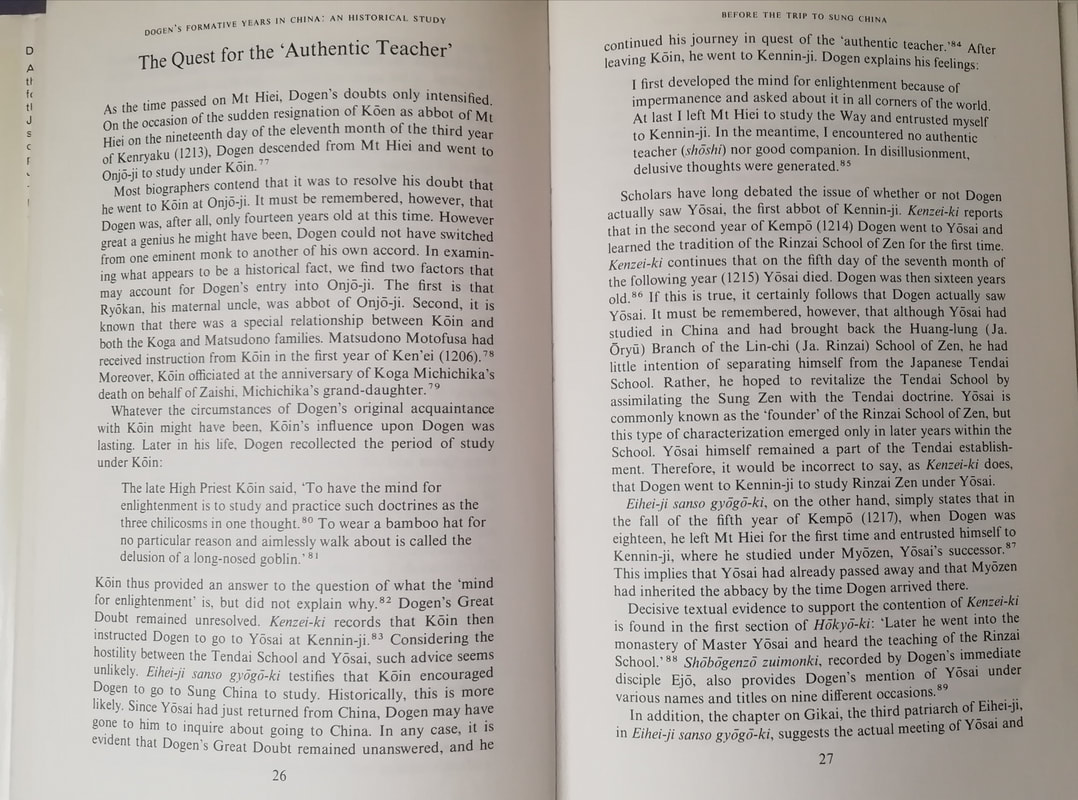
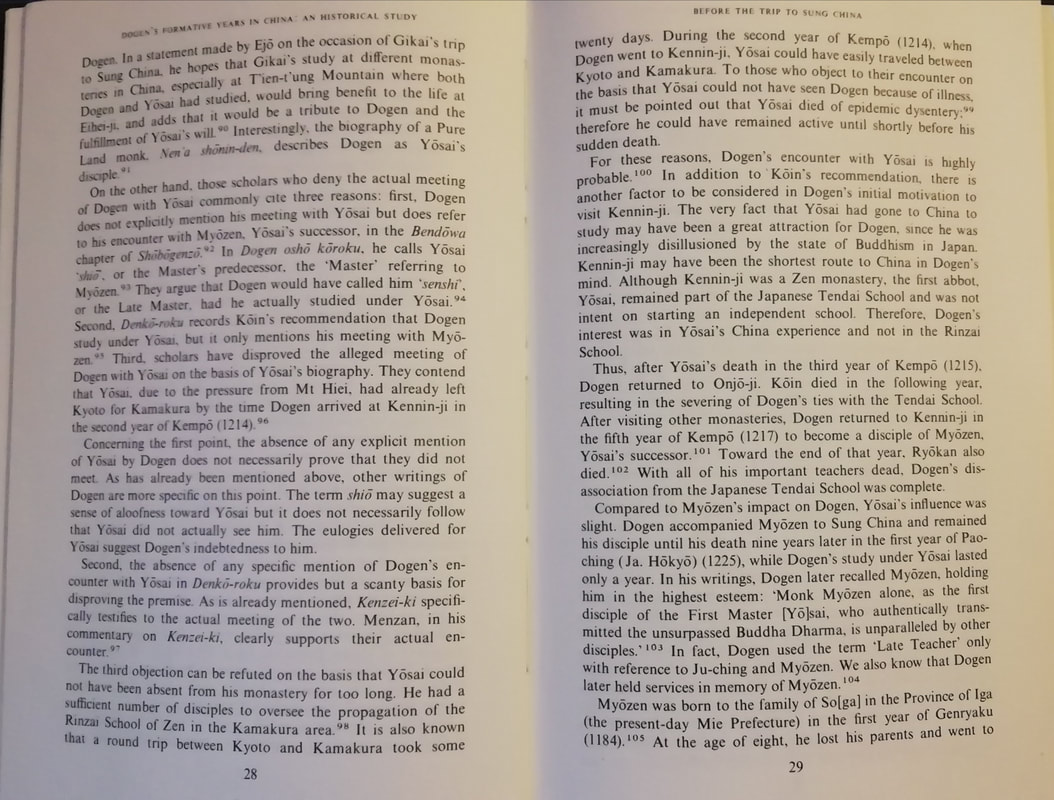



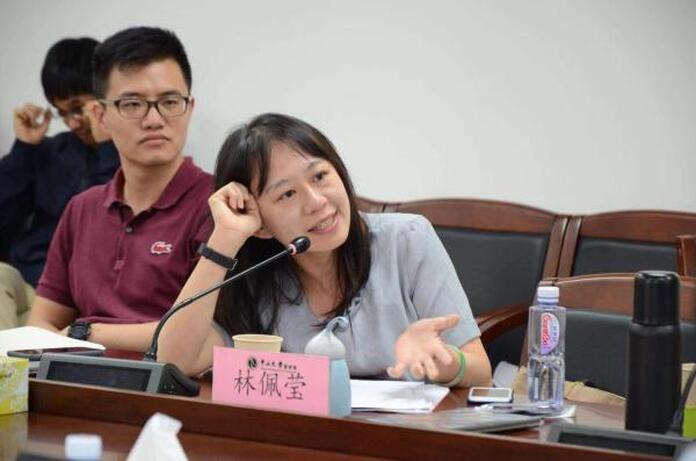


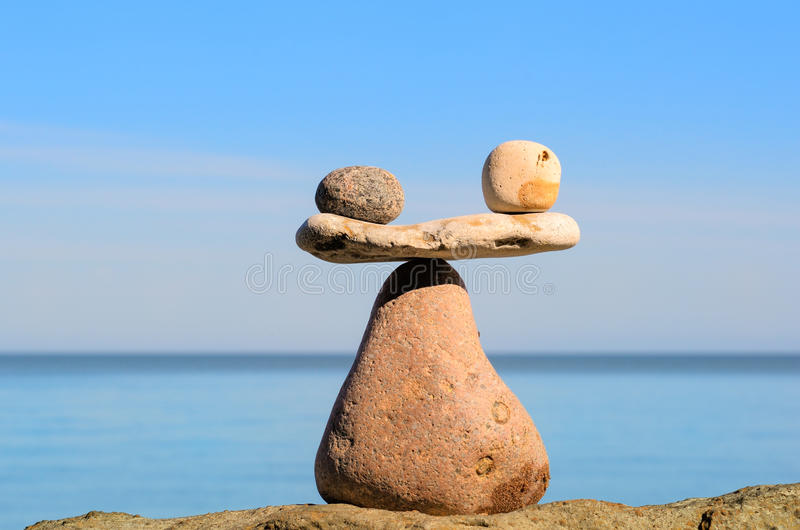

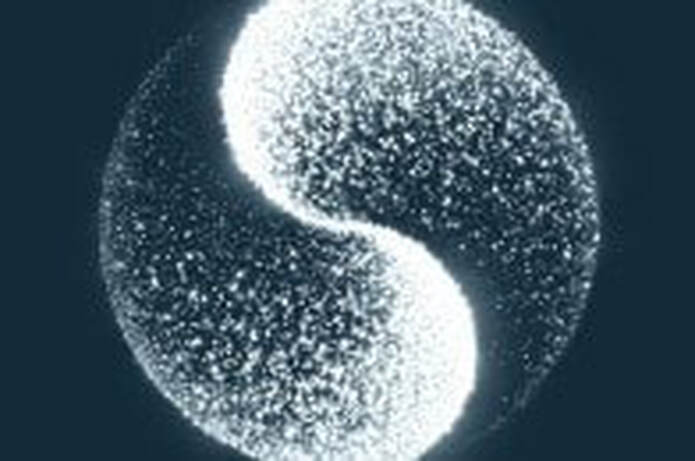

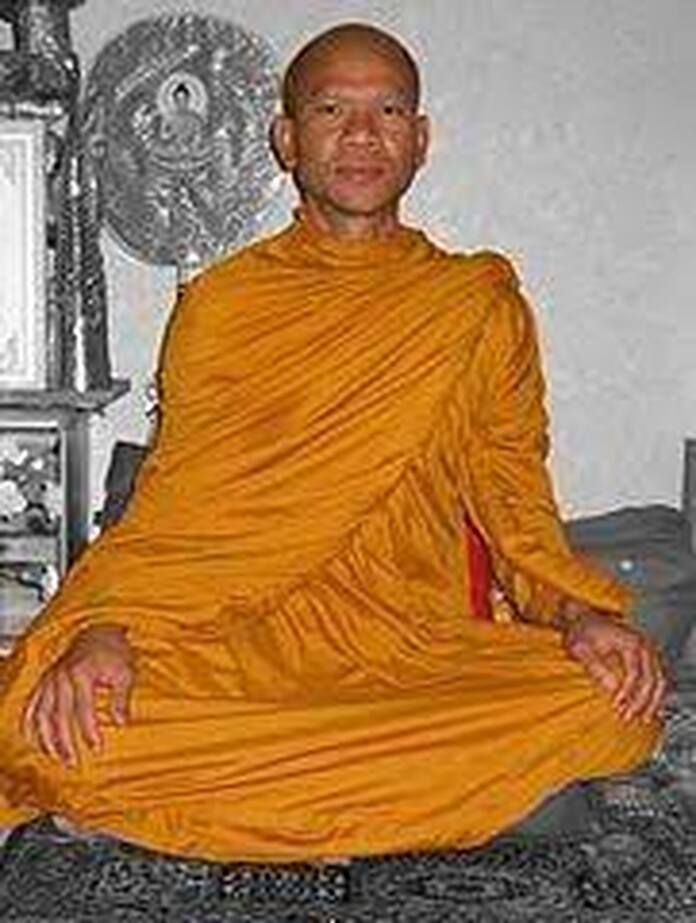



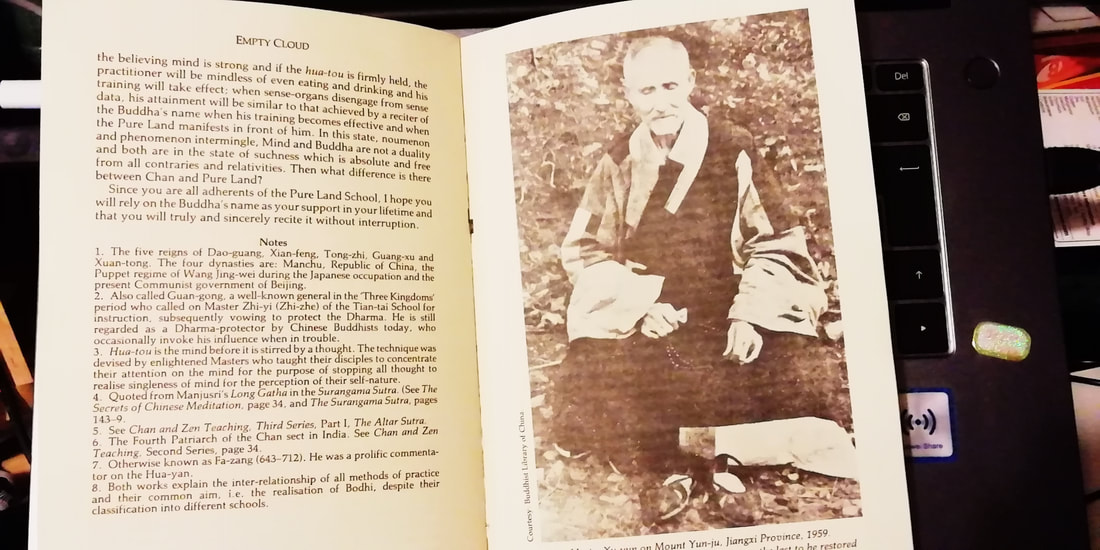

 RSS Feed
RSS Feed